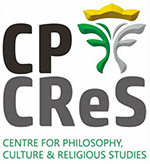Homili Imajinatif: Imaji Kitab Suci dan Imaji Umat dalam Peristiwa Bahasa
DOI:
https://doi.org/10.26593/mel.v30i2.1290.223-251Abstract
The author argues that homily is not only an event to explain the Scriptures and relate them to the believers’ experiences in order to find God’s will in their daily lives, but a transformative experience for the preacher that it should be conveyed in an attractive, understandable, and influential way. One of the alternatives discussed here is the imaginative preaching. The setting of the imaginative preaching is the world of images, that is, the images living in the sphere of mind and heart. A homily is a space that captures various images from the Scriptures as well as from the believers’ experiences and paints the images through the verbal language, which is used not only to ‘explain’ something already known by the hearers, but to present a figurative language that may open the horizons formerly not realised with simply an explaining language. Imaginative preaching intensifies and opens up the horizons, and not simply widens them. It may offer different ways of understanding to the believers as a community, which is also the place of God’s presence and works day-by-day. In this way imaginative preaching might also be seen as an area of study that focuses on the relatedness among God’s stories, the believers’ stories, and the preacher’s stories. A homilist must always build a bridge between the text and the believers’ context by way of painting the images in the sphere of figurative-verbal-language – a narrative.
Downloads
Published
Issue
Section
License
Copyright (c) 2014 P. A. Didi Tarmedi

This work is licensed under a Creative Commons Attribution-NonCommercial 4.0 International License.
MELINTAS applies the Creative Commons Attribution (CC BY NC) license to articles and other works we publish. If you submit your paper for publication by MELINTAS, you agree to have the CC BY NC license applied to your work.


